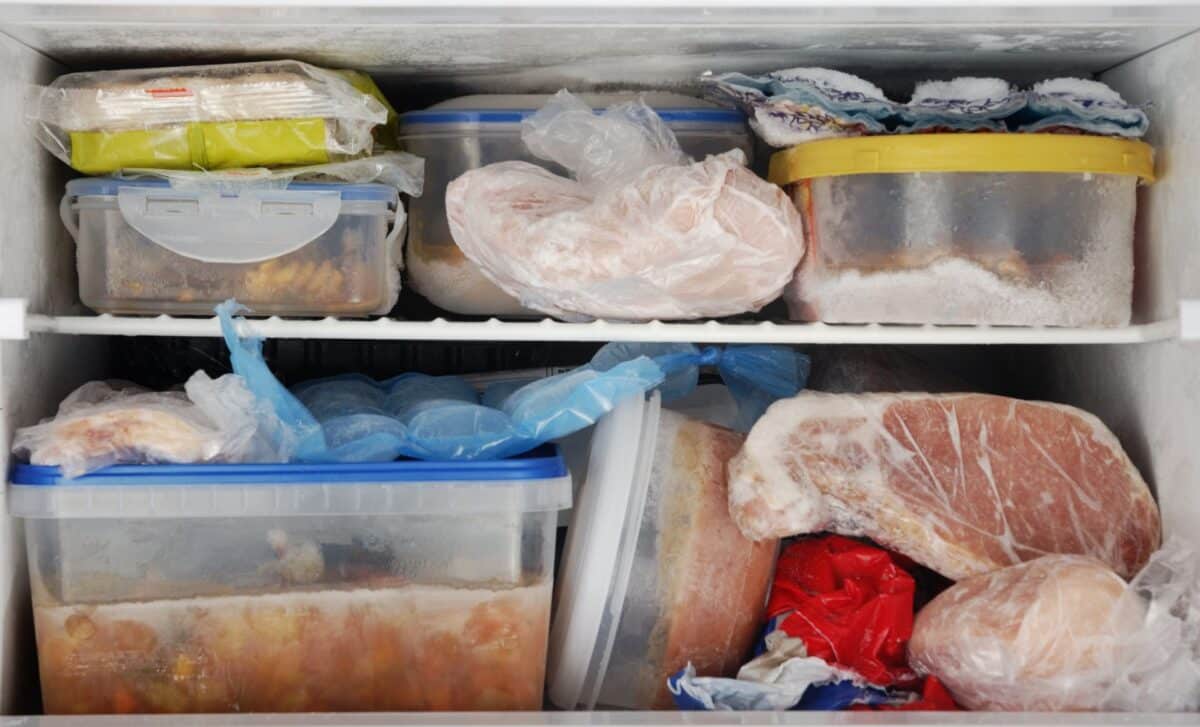You might think a jam-packed freezer is saving you money, but what if it’s doing the opposite? Behind those frozen dinners and stacked leftovers, your appliance could be struggling to keep up, the hidden risks of overloading are more serious than they seem.
How to Tell If Your Freezer is Overstuffed
A full cooling system might appear to be more energy-efficient, but when it’s over 85% full, airflow gets blocked. Cold air, which normally circulates from vents along the walls, can’t spread evenly. As a result, the appliance’s motor and condenser have to work harder to cool the packed interior. Not only does this increase the chances of malfunction, but it can also shorten the appliance’s lifespan.
If you’re struggling to close the freezer door, it’s a sign your appliance is too full. Excess food makes it hard to seal properly. Unusual clicking, humming, or buzzing noises indicate poor airflow, often due to frost buildup on the evaporator coils.
Another red flag is temperature inconsistencies, with solid items in the back and soft ones in the front. Frost on the walls, especially on one side, suggests blocked vents or a weak door seal, both consequences of overloading.
Want to Sleep Better? Try Eating a Banana Before Bed
Food Quality Suffers When Air Can’t Flow
Overcrowding affects not just your appliance, but also your food. Freezer burn happens when air pockets form around items, causing dehydration and tough textures. Slow freezing causes large ice crystals to form, damaging meat, fruit, and vegetables. This leads to dry, unappetizing food once thawed.
“Temperature fluctuations in a cold storage can lead to microbial growth, even in frozen food. When temperatures rise above freezing, bacteria can become active again, increasing the risk of spoilage and foodborne illness,” says Dr. Susan Smith, Food Safety Specialist at the U.S. Department of Agriculture (USDA).
A Full Freezer Could Be Your Worst Enemy
While a full unit is more efficient than an empty one, it needs balance. Emily McCoy, Senior Appliance Expert at Consumer Reports explains, “To ensure optimal performance and efficiency, it’s important not to overload it. Keeping it between 70% to 85% full allows for proper airflow and energy savings. Too much food can block air vents, resulting in uneven cooling and unnecessary strain on the appliance’s motor.”
Exceeding this capacity forces the cold storage to work harder, trapping warm air and creating cold spots. Fresh items freeze slower, and the compressor struggles to maintain the right temperature.
Smart Habits That Make a Difference
To keep your unit running efficiently, it’s essential to leave space around the air vents and avoid overcrowding. This ensures that cold air can circulate freely, improving efficiency and maintaining consistent temperatures.
Regularly inspect the door seals and replace any damaged ones to prevent warm air from entering, helping your freezer function properly. Defrosting when frost buildup reaches ¼ inch is also crucial for optimal performance.
Set your freezer to the ideal temperature of 0 °F (-18 °C) to avoid energy waste and prevent food spoilage. Organize the contents with labeled containers to prevent overpacking, which can block airflow. Also, clean the condenser coils periodically to help the unit run more efficiently. This simple maintenance task can prevent overheating, save energy, and extend the lifespan of your appliance.







